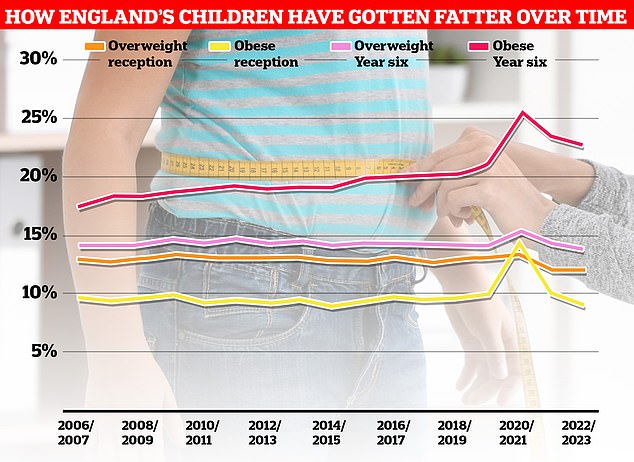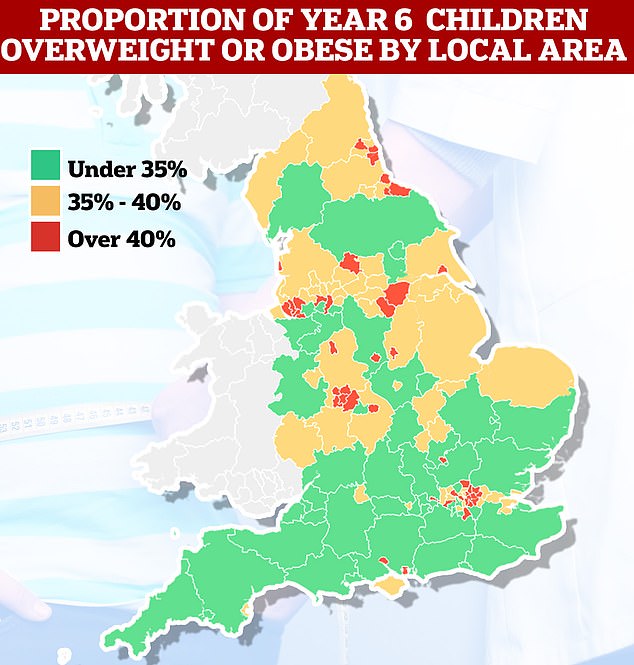Revealed: Where in the world kids are healthiest, according to exercise, sleep and screen time – so where does the UK rank?
African children are the healthiest in the world, narrowly beating children in Europe and performing much better than those in America.
This result comes from a pooled analysis of data from 33 countries that examined what proportion of children aged three to five get enough exercise, sleep and time away from computer, television or smartphone screens.
While Europe, which includes Britain, recorded that just over half of children were getting enough physical activity, specific data for Britain alone suggests that only a tenth of children are actually achieving the recommended level of physical activity.
Young people from Africa had the best overall outcome, with around one in four (23.9 percent) getting the recommended exercise, screen breaks and sleep.
Europe came in a close second: 23.5 percent of children reached this standard.
Young people from Africa had the best overall outcome, with around one in four (23.9 percent) getting the recommended exercise, screen breaks and sleep
The Americas, which also includes North American countries such as the US and South America, performed the worst, with fewer than one in ten (7.7 percent) achieving this level of health.
Children in this region were mostly let down by their sedentary time, periods of sitting still – and used as a proxy for screen time – with only 17 percent taking sufficient breaks, the lowest percentage of any region analyzed.
The next worst in terms of overall performance were children in Southeast Asia, such as Thailand and Indonesia, (9.1 percent), followed by children in the Western Pacific countries of Australia and New Zealand (12.4 percent). ).
The analysis, published in the journal JAMA Pediatricswas conducted by a multinational team of experts led by experts from the University of Wollongong in Australia.
They looked at data collected from just over 7,000 children from 33 countries between the ages of three and almost five, collected between 2008 and 2022.
Children’s exercise levels were measured using activity monitoring devices, while screen and sleep time were measured using parent reports.
Experts then looked at how many children met the World Health Organization (WHO) guidelines on child health per global region.
For exercise, this included spending at least three hours a day doing physical activity, of which one hour should be ‘moderate to vigorous’ such as running. There are guidelines that the NHS also adheres to.
For screen time, the WHO recommended threshold was just one hour per day, with young children also aiming for 10 to 13 hours of sleep.
Although the analysis did not specifically look at countries’ individual results, a separate WHO analysis published earlier this year suggested that British children are far behind their contemporaries when it comes to physical activity.
This data only showed that 30 percent of girls and 18 percent of boys in England are inactive across all age groups surveyed, while in Wales this figure is 27 percent for girls and 17 percent for boys.
In Scotland, 21 percent of girls are inactive, alongside 12 percent of boys.
By comparison, in the latest analysis, the WHO European Region’s overall result for physical activity was 53.5 percent, mid-range of the six regions analyzed.
In terms of physical activity, North and South America have the best combined result, with almost three-quarters (72.8 percent) of children meeting their daily physical activity requirements.
But the overall results were worrying: fewer than one in six children worldwide (14.3 percent) met all three recommendations, according to the analysis.
It’s even worse for girls, with only 12.8 percent meeting the recommended thresholds, compared to 16.8 percent of boys.

More than a million children had their height and weight measured as part of the National Child Measurement Program (NCMP). Nationally, the rate among children in the sixth form is well over a third, despite falling slightly since the start of Covid
Girls seemed particularly let down by the level of exercise. Globally, less than half (41.7 percent) of girls did enough exercise every day, compared to more than half (55.6 percent) of boys.
The authors noted that this could be due to parents generally offering boys more “freedom” than girls, allowing them to play with less supervision.
Overall, the authors said that while subject to limitations such as sample size and the self-reporting nature of screen use and sleep duration, the results were concerning.
“Early childhood is recognized as a critical opportunity for developing healthy exercise behavior patterns that are important for lifelong health and well-being,” they wrote.
‘Our finding of a low proportion of children meeting general WHO guidelines across countries and regions has important implications for future public health if further action is not taken to address this issue.’
Getting enough exercise is well-established in improving both physical and mental health, and in the long term it helps prevent health problems such as obesity.
The latest data on childhood obesity in England shows that one in ten children are overweight by the time they start primary school, rising to around one in four by the sixth year.

Among sixth grade students, national obesity decreased from 23.4 percent in 2021/2022 to 22.7 percent. Meanwhile, the proportion of children considered overweight or obese also fell from 37.8 percent to 36.6 percent. Both measures are above pre-pandemic levels
Experts have pointed to a lack of exercise and a poor diet high in ultra-processed foods as major causes of Britain’s childhood obesity epidemic.
When used on screen, the authors noted that the worst results were recorded in America and theorized that this was partly due to the region’s higher ownership of digital devices.
They added that recent assessments of parents’ views on children’s screen time have found that many see devices as a necessity in this technological age and often use such devices as a distraction or reward for children.
The authors noted that this highlighted the importance of educating parents about healthy screen use and setting limits for children’s use of technology.
Children who spend too much time using screens have been linked to a host of health and behavioral problems, from poor vision to emotion regulation.
